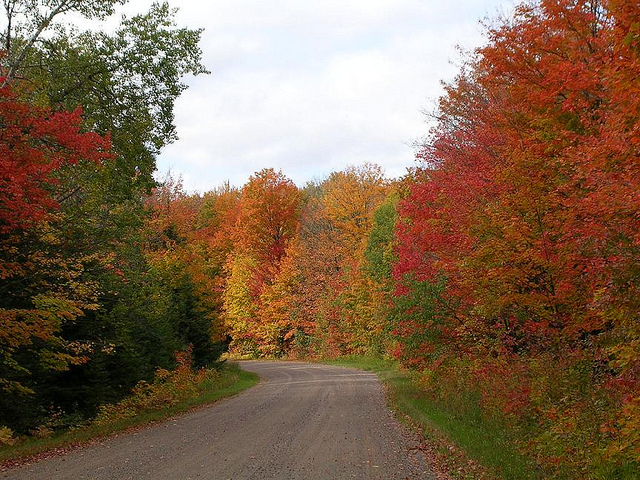November Garden Checklist
 It's Halloween (eek!) today, which means that we're counting down rapidly towards the end of the year. Tomorrow, a new month dawns, and that means it's time to start thinking about what you should be doing in your garden this November. Remember: A little bit of work here and there is way easier to fit into your schedule, and way less tiring, than trying to do it all at once.
It's Halloween (eek!) today, which means that we're counting down rapidly towards the end of the year. Tomorrow, a new month dawns, and that means it's time to start thinking about what you should be doing in your garden this November. Remember: A little bit of work here and there is way easier to fit into your schedule, and way less tiring, than trying to do it all at once.
Bulbs
If you haven't put them in the ground already, hop to it. This is actually a great time to get bulbs, because they're often 50% off or more as companies move their stock out. Use a bulb planter to speed the process (remember to sprinkle some bulb food in the bottom of the hole) and go to town across the garden. Bulbs look best in massed plantings, so think about that as you plan things out.
Be aware that some bulbs, like daffodils and iris, aren't very interesting to gophers, and can in fact make a great protective ring around tender plants like young apple trees. Others, such as tulips, are a gopher's delight, and need to be planted in cages and containers or you won't see them come spring.
Frost Protection
Brrrrr, it's getting cold! It's time to talk to a carpenter about cold frames or a greenhouse if you have some serious frost protection needs. Otherwise, start setting up frost cloths around your more delicate plants and trees so they'll make it through the winter. They need to be tucked in every night (and during the day if you live somewhere with consistently freezing temperatures) to keep them safe.
Clean Up Beds and Borders
All those dead plants? Yeah, it's really time to make those go away now. Trim away dead foliage, uproot weeds, compost the leavings, and cultivate the beds to leave them smooth and even for next year. You can work in some mulch and compost to condition the soil, if you like. In mild climates, try planting overwintering flowers and crops, like mums and kale. In cooler reaches, well, all that ugly soil will be covered by snow soon!
Drain and Insulate Hoses, Standpipes, and Other Fixtures
With frost comes broken pipes, unless you act ahead of time. Drain all your outdoor water fixtures and cut their water supply so they won't fill up. Put hoses in storage, and insulate your standpipes to prevent cracking and ice damage in the winter. When your neighbors are tearing their hair out and calling an emergency Boston plumber over broken pipes, you can continue lounging in front of the heater.
Bare-Root Planting
Roses, berries, trees, and anything else that comes bare-root should be planted this time of year. Dig out the hole well to provide plenty of loose soil for roots to spread in, and be sure to add compost and fertilizer. Once firmly planted, add mulch on top to insulate the soil and the fragile roots while they get established. By planting in fall, you'll give them time to build up energy for spring growth.
Leaf Management
Still have a leaf problem? Not surprising -- many trees are just starting to turn across the country. Set aside 30 minutes or so each week for leaf control.
Raise Your Containers
If you have planters in dishes, get them out of the dish and onto a rack or set of pot feet. In the winter, they can quickly waterlog as the water will build up when the rains start. That's bad for roots, and will quickly kill your plants.
For the Birds
Make sure your bird feeders are full for your avian visitors. They'll appreciate seeds and suet during the cold winter months. Don't be surprised if you see squirrels as well, looking for things to snack on. If you start noticing mice and rats, consider hiring a cat -- but in the short term, you'll want to try elevating the bird feeder and installing a tray to catch fallen seeds so they don't end up on the ground.
Force Bulbs
Want some indoor color this winter? Now is the time for forcing. Pot some bulbs in a clean container with sterile soil, and then stick them in a cold place in the house, covered in mulch and a bag with air holes. They'll need to stay cold for around 12 weeks, at which point you can bring them into a room temperature area. They'll start putting out shoots and leaves shortly thereafter. Amaryllis, crocus, and narcissus are all great for forcing, as are hyacinths.
Katie Marks writes for Networx.com.
Looking for a Pro? Call us (866) 441-6648

Landscaping Average Costs
Landscapers Experiences

Tree Removal So Fast And Efficient It Didn’t Even Wake Our Newborn

Rock Landscaping Adds Curb Appeal To An Arizona Home



